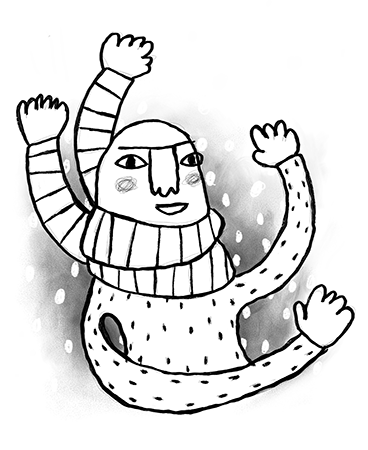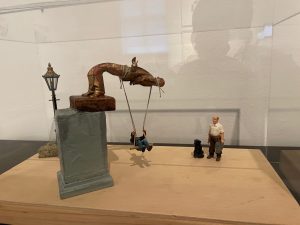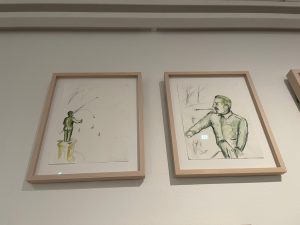Arts, Cultural Management, and Healthy Democracy

Arts against autocracy
How can arts and culture help democracy resist the external forces that push a society toward illiberalism, populism, and autocratic rule? What specific role do arts and culture organizations and cultural producers play and how do they sustain against illiberal political tensions? What are the ways arts and culture systems can be used to disseminate and validate democratic principles and values?
These questions can resonate in cultural professionals’ minds with a doubled power in times of the Russian attack on Ukraine, an example of the extreme consequence of the Russian dictator’s policies and practices. They included not only open violations of human rights, repressions against freedom of speech, and a reign of propaganda, but also instrumentalization of the realm of arts and culture in Russia and abroad.
The current discussions are a reminder to several others that were present in European artistic circles in 1930s and 1940s. They were focused on the artists’ positions against or in the dark powers of Fascism, Nazism, and Stalinism. Raised again in response to the later variants of soviet autocratic regimes and their tragic impacts in different parts of the world, during the entire second half of the 20th century.
And let’s not reduce our sight to Europe but think of many artists and art producers’ freedom of expression limitations in several non-democratic countries on African, Asian, and South American continents, seen both, in the past colonial reality and today. These questions have their relevance again in recent years with the rising wave of political success achieved by more aggressive populists, political extremists, and historiographical negationists in countries all around the globe. To our surprise, they appear in countries of a highly respected reputation as liberal democracies, that used to keep their healthy political balance for many decades.
Art as a Pillar of Healthy Democracy
Arts and politics were discussed a few weeks ago, in December 2021 as the third episode of COSM Talks open seminars series organized by Humak University of Applied Sciences. The invitation of guests, cultural management, and cultural policy researchers and teachers was not coincidental. Constance DeVereaux (University of Connecticut), Tal Feder (Israel Institute of Technology), Mariano Martin Zamorano (University of Barcelona) were among the team members involved in the preparation of the Horizon Europe research grant application called ARCUPID (Arts and Culture as Pillars of Democracy) prepared with the University of Zeppelin as a project leader. Katri Kaalikoski, Pekka Vartiainen, and Marcin Poprawski, hosts and moderators of the discussion, that represented Humak were part of that process, too. This short text is based on the summary of comments made by the COSM Talks participants mentioned above.

The use of the “healthy democracy” concept helps us to envision liberal democracy as a dynamic, living system that sustains human society and is sustained by it, in turn. The overarching question here is: how cultural professionals can foster and strengthen healthy, democratic dialogue and promote citizen participation, especially in a way that provides for citizen action and oversight of educational, policy, organizational, institutional, legal, and media systems?
Power of Art
Every day, cultural workers, managers, and producers are in the middle of the artistic processes. They facilitate or coordinate them. The paradox of art is that it can flourish at the same time when pillars of democracy are eroding. Some may call the artistic effort a kind of unreal, but art is essential to democracy. It invites arts audiences into perspectives and ways of life different from their own and helps foster a sense of empathy. It can be a key parameter of freedom and hold a mirror to society and reveal hidden truths, and in this way amplify diverse perspectives that should have always been included. Picasso was supposed to have said that “art is a lie that makes us realize truth“.
Artists and cultural producers are trying to figure out ways to break the rules, pushing boundaries, and constantly questioning society and that’s what makes art both uncomfortable and important to illiberal politicians who want to control society. Artists are trained to use the freedom of expression, provoke unusual reactions, work with unpredictability, and activate their critical sensors of asking for those who are not present or in the mainstream. They are professional users of imagination: their job is to imagine the future as related to the past.
That imagination can be dangerous to some abstract political constructs that are foreground of autocracy and totalitarian regimes. Some sociologists would probably say that the power of art is a social construct that actually exists only because we believe it exists. A government that oppresses art enhances this perception of art as powerful and it’s not necessarily something which is essential in art production itself, it’s more the way how we see it that it becomes a reality.
Three Schemes of Political Instrumentalization
Let’s think about how governments and political rulers of both democratic and illiberal kinds can see arts and artists. We can have a triangular perspective when explaining that: the romantic, the didactic, and the classical. All of them can, unfortunately, to different extents, instrumentalize the cultural organizations and cultural professionals’ work.
(1) The romantic scheme says that art is something that embodies an inner truth and art must be autonomous, it gives account to nothing else but itself and it can be only evaluated by artists or experts. It is supported for the sake of excellence.
(2) The didactic scheme perceives the arts as something that has a social power and must use it in support of specific goals that are decided by the state or the governing politicians. It can be national identity or other political rationales.
(3) The third perspective, called the classical perception of art, is closest to ‘bread and circus’ political tactics. Here, the art does not have too much power, it doesn’t hold any inner truth, art is a leisure activity, enjoyable for the sake of catharsis. It needs to be supported for the sake of society, it’s entertaining lifestyles or a kind of public service.
Artists Are Engineers of the Human Soul
The illiberal or autocratic regime prefers the didactic model, both in narrations and in policies, seeing in arts political or societal force. Therefore, this power must be regulated by the state. Looking more into soviet and post-soviet realities it is worth mentioning that Andrei Zhdanov, former Soviet Communist Party leader and cultural ideologist said that artists are engineers of the human soul. This is the explicit example of the perception of art as something that must influence the individual to the required form of a political subject in an illiberal state. The recent ascent of illiberal political activities that are suppressing cultural production that is inappropriate to the expectations of political regimes is, however, not an Eastern European phenomenon only.
In illiberal regimes, there is an illusionary image of the state as ruling a homogeneous group of society. In such a manipulated perception of society, there’s no place for any kind of divergence. There is disregard and oppression instead, that does not give equal rights to any kind of minorities. And this is an idea substantially opposite to the unlimited, kaleidoscopic variety of expressions offered by the arts.
Instrumentalization Adopted by the Artists
Taking into consideration several cases of illiberal policies towards the arts and unjustified legal limitations imposed on artists, we can find some parallels of three schemes mentioned above, that correspond to the typology of responses of the art world itself. Especially the classical scheme is expressed in the silence and no resistance of this part of the creative industries that perceive art as a leisure activity. They focus on the production of entertaining content.
As their art seems not politically conflictual, they think their positions and content are not at risk, and they naively do not consider themselves as targets of politicians. They do not feel honest empathy to targeted colleagues and do not worry about illiberal control of production through content defining and funding.
In the romantic side of the arts world, the general preference is in avoiding a direct acknowledgment of the power of art, stressing the autonomy of art. According to that position, artists have their inner truth, and they produce the art that they want and do not need to think about anything else. If the resistance to illiberal practices comes from didactic scheme supporters, the power of art is usually acknowledged as the right and obligation to support the art of minorities, which need to be funded from the state resource.
Illiberal Regimes and Cultural Domain
We should look carefully and counteract the way how far-right populism is using culture to enforce illiberal policies that go beyond the cultural field, using culture to enforce the overall political agenda. That relates not only to policies but first to (social media) communication styles used by parties that are applying these strategies to weaken democracy. It deals with communicating discursive strategy to confront certain classification of the people on the one hand and then a certain understanding or definition of the elite on the other hand. Here the figure of the charismatic leader as representative of the people’s will is very important.

Cultural domain was always addressed in the populism literature, however specific issues regarding cultural management and how the illiberal movements were infecting them were not properly addressed. The concept of healthy liberal democratic cultural policies is an essential political context for artists’ and cultural managers’ practice. We find there an open definition of culture, competitive system of public support, that can have many different models and concepts of value that are important to define the quality of that democracy, and then a certain governance model that is ideally based on professional and efficacy criteria including subsidiarity principle application.
Counteracting Illiberal Narratives
Illiberal regimes tend to institutionalize the homogeneous understanding of national identity that is associated with “the us opposed to them”. This ideology is paired with development of different kinds of censorship and then direct control of institutions that are expected to base themselves on the ideological project. Illiberal regimes installed within democratic structures try to keep the facade of democratic rules. Therefore, they use mostly the indirect control of institutions and semi-legal reduction of their autonomy. That means removing inconvenient art institutions leaders from their positions through opaque laws of office, and legal tricks.
There is an infinite list of options in regards to different instruments of pressure: like stalking the art organization with continued sequences of unjustified financial audits; disturbing its everyday functioning with controllers visits or legal investigations; unprecedented changes in budgetary frameworks or unexpected cuts of funding; administrative re-centralization or a merge of a ‘naughty’ institution with another one, fully controlled by the illiberal government; and a plentitude of communication strategies that hit the reputation of the institution with fake news or stigmatizes the leader with imagined allegations.
It is important to promote activism, counteract illiberal narratives, boosting actual heritage against totalitarianism. This is predominantly the role of local governments, that are using different instruments to oppose these narratives and policies from a heritage standpoint, and also activities many organizations are being organized against legal changes of illiberal governments, against policies including specific cultural policies.
Arts Require Democracy
But it is as important to stress that arts organizations require democracy to fulfill their ideals. That relates to their leadership styles and the quality of their organizational cultures, too. Paradoxically, management models in the arts tend to be non-democratic and sometimes anti-democratic. There are charismatic artists, individuals in leadership positions who are distinctly anti-democratic.
Another dilemma that does not help to stabilize democratic standards in cultural organization is the characteristic component of the arts organization. It’s the notion of excellence that is a rationale or a factor in the art production as well as in arts organization governance and leadership. The intriguing question is: does excellence necessarily compromise democratic values?
Adapting and cultivating autocratic models of leadership inside art organizations can promote dangerous and devastating standards. There is pressure in many arts organizations to make decisions quickly and autocratically rather than collaboratively and democratically. Managerialism and accountability play the role of democracy counterforces in arts organizations and can be the source of a problem. That is why we need to promote leadership models that fit the realities of art organizations that follow sustainability-related values, that are democratic and responsive to human values.
We need to answer the question: which leadership models, strategies, and theories best address the needs of arts organizations where barriers exist that impede fulfilling those needs, and is the leadership’s response adequate to address the challenges? We need to break through the status quo and realize that we can make conscious choices about the leadership style that we adopt in cultural management settings. The goal is to integrate communication with clear organization goals that also nurture the individual.
Healthy Democracy as a Sustainable Value for Healthy Culture
Art organization is a paradox or might be even seen as a contradiction. Art brings the notion of unpredictability as being a powerful part of artworks. That can be seen as opposite to purposes to organizations that have to operate on predictability. It’s hard to balance an art organization where you’re said to place more importance on money, which matters than everything else that you’re doing. If leaders believe that that’s what they need to do it leads towards a more autocratic style of governance. That relates to the dilemma of arts organizations under the pressure of an economy that is in crisis.
When the mission of the non-profit arts institution is driven by money, it very often betrays its original mission that should be value-driven. That’s the most natural way to encourage a genuine and sustainable engagement and meaning, founded by people who are the citizens of that organization. That’s the most reliable scenario to increase participation which is distinctly a value of democracy. When we have organizations that are themselves democratic, then we’re more likely to perform in democratic ways in society.
One of the answers to the question how art organizations can counter the emerging illiberal tendencies is to build trends that enforce democratic standards and follow the values of inclusion, diversity, and equity in access as the primary goals of cultural policies. This way art production that has political power can reflect the required political context and political distribution of powers that we want to see. A healthy democracy is a very substantial sustainability value as a balanced fundament for the practice of cultural manager or cultural producer in any art-related setting.
Literature:
Badiou, A. 2013. Rhapsody for the Theatre. New York: Verso Books.
Baudrillard, J. 2005. The conspiracy of Art. New York: MTI Press.
Bonet, L. & Zamorano, M. M. 2021. Cultural policies in illiberal democracies: a conceptual framework based on the Polish and Hungarian governing experiences. International Journal of Cultural Policy, 27:5, 559-573.
DeVereaux, C. 2006. Any Way the Wind Blows: Changing Dynamics in American Arts Policy. The Journal of Arts Management, Law and Society, 36:3, 168–180.
DeVereaux, C., and Griffin M. 2013. Narrative, Identity and the Map of Cultural Policy: Once upon a Time in a Globalized World. Surrey, Burlington: Ashgate.
Feder, T. and Katz-Gerro, T. 2012. Who benefits from public funding of the performing arts? Comparing the art provision and the hegemony-distinction approaches, Poetics, 40:4, 359–381.
https://freemuse.org/news/the-state-of-artistic-freedom-2021
Groys, B. 2019. Art power. Bielefeld: Transcript-Verlag.
www.indexoncensorship.org/targeting-the-messenger-investigative-journalists-under-extreme-pressure/
Ranciere, J. 2013. The politics of aesthetics. London: Bloomsbury Publishing.
Strati, A. 1998. Organizational Symbolism as a Social Construction: A Perspective from the Sociology of Knowledge, Human Relations, 51:11.
Virilio, P. 2006. Art and fear. London: Bloomsbury Publishing.
Text: Marcin Poprawski, Senior Lecturer, PhD
